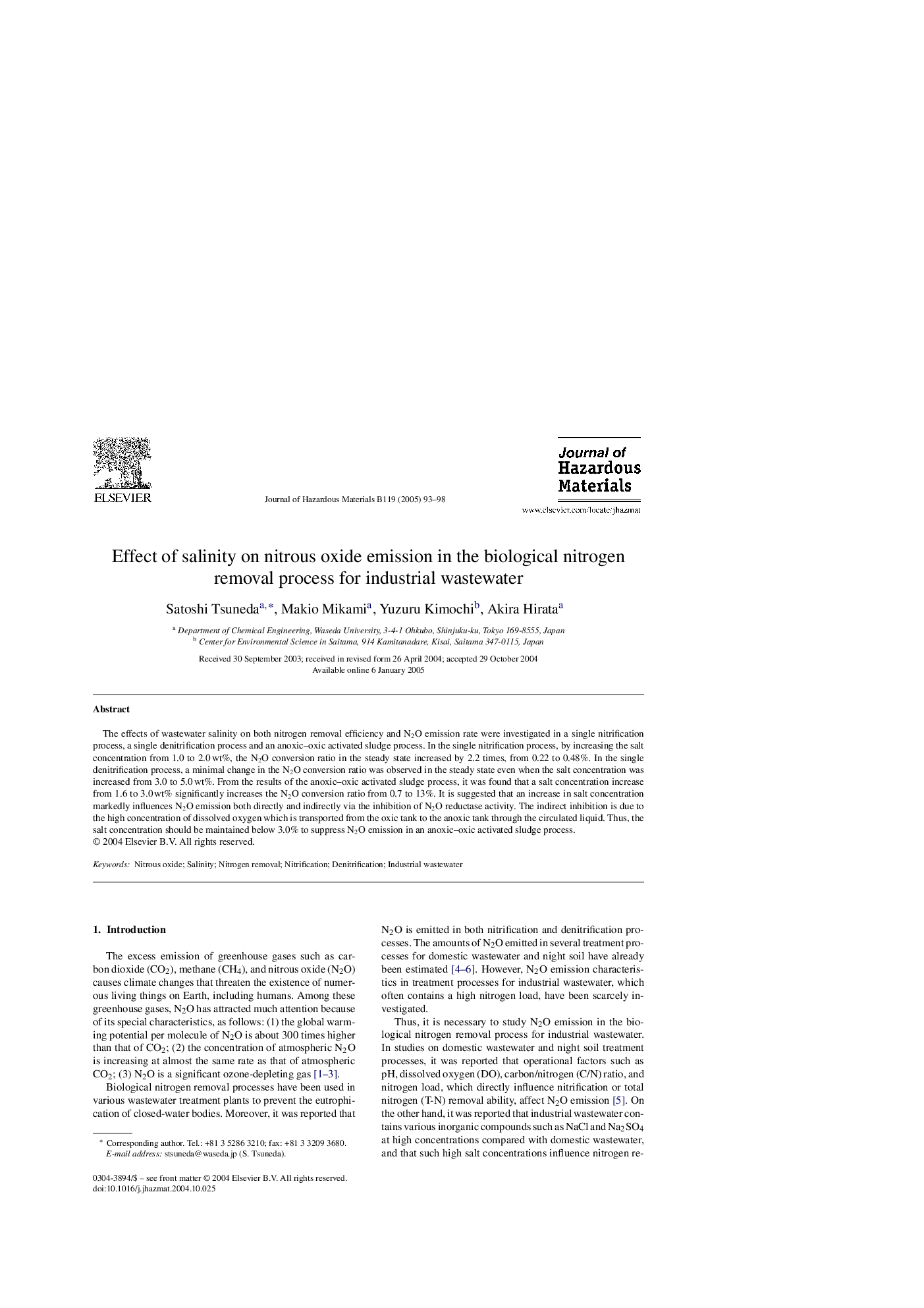| Article ID | Journal | Published Year | Pages | File Type |
|---|---|---|---|---|
| 9674345 | Journal of Hazardous Materials | 2005 | 6 Pages |
Abstract
The effects of wastewater salinity on both nitrogen removal efficiency and N2O emission rate were investigated in a single nitrification process, a single denitrification process and an anoxic-oxic activated sludge process. In the single nitrification process, by increasing the salt concentration from 1.0 to 2.0Â wt%, the N2O conversion ratio in the steady state increased by 2.2 times, from 0.22 to 0.48%. In the single denitrification process, a minimal change in the N2O conversion ratio was observed in the steady state even when the salt concentration was increased from 3.0 to 5.0Â wt%. From the results of the anoxic-oxic activated sludge process, it was found that a salt concentration increase from 1.6 to 3.0Â wt% significantly increases the N2O conversion ratio from 0.7 to 13%. It is suggested that an increase in salt concentration markedly influences N2O emission both directly and indirectly via the inhibition of N2O reductase activity. The indirect inhibition is due to the high concentration of dissolved oxygen which is transported from the oxic tank to the anoxic tank through the circulated liquid. Thus, the salt concentration should be maintained below 3.0% to suppress N2O emission in an anoxic-oxic activated sludge process.
Related Topics
Physical Sciences and Engineering
Chemical Engineering
Chemical Health and Safety
Authors
Satoshi Tsuneda, Makio Mikami, Yuzuru Kimochi, Akira Hirata,
